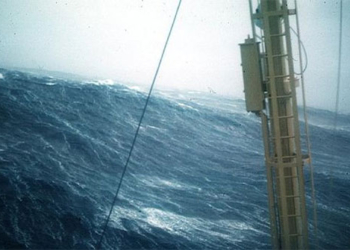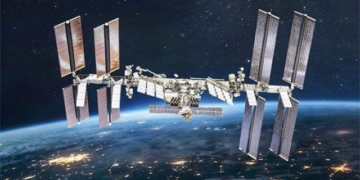Below are 5 super weapons that have been decommissioned, but if they had continued to exist, they could have brought significant changes to the organization and combat operations worldwide.
Super Weapons That Could Change the World
AH-56 Cheyenne
In the early 1960s, the U.S. Army began to appreciate the role of helicopters. As the sophistication of machinery advanced, this force considered developing more advanced helicopters to conduct various missions.
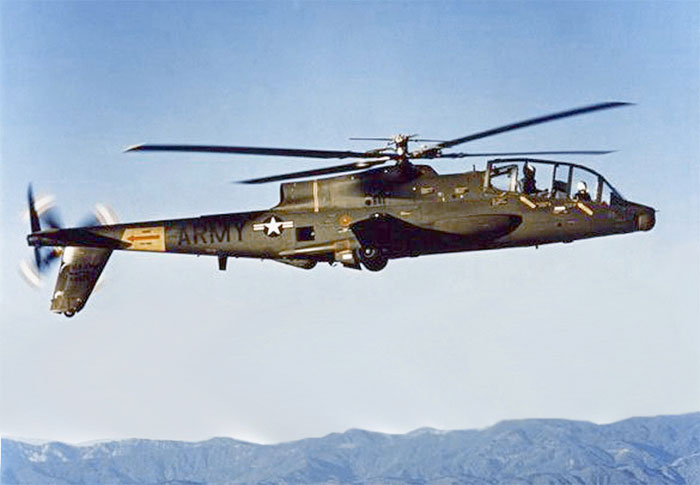
This aircraft has a powerful propulsion system with speeds that can reach over 400 km/h.
The “star” of this process is considered to be the AH-56 Cheyenne, an innovative design that combines high speed with powerful thrust. The Cheyenne could escort other helicopters on transport missions or conduct ground support and independent attack operations. Notably, this aircraft also features a powerful propulsion system capable of exceeding speeds of 400 km/h.
However, Cheyenne became a “victim” of its own prospects. The technologies needed to make Cheyenne’s production feasible had not yet developed, while the initial prototypes faced numerous unresolved issues. The U.S. Air Force was not fond of the entire idea of the Cheyenne and believed that the Army wanted to take over air support missions and conduct attacks on transportation systems independently. The Air Force proposed the idea of developing a fixed-wing attack aircraft (which later became the A-10) in an effort to terminate the program.
As a result, the Cheyenne never entered service. Nevertheless, a few years later, the Army pushed for the development of the AH-64 Apache attack helicopter. Thus, the cancellation of the Cheyenne only delayed the development of modern attack helicopters rather than ending the program. The Apache is also considered to be much safer than the Cheyenne.
B-70 Valkyrie
Developed to replace the B-52 Stratofortress and B-58 Hustler, the B-70 Valkyrie was designed to penetrate Soviet airspace at high altitudes with speeds reaching up to Mach 3. Nicknamed the “Mafia Bomber,” the B-70 once represented the future of the U.S. Air Force.
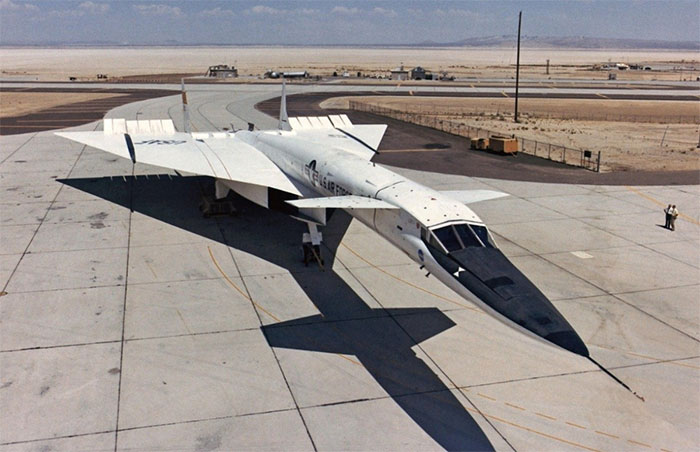
XB-70 Valkyrie Bomber. (Photo: Reuters).
The design of the Valkyrie resembles a spacecraft more than a fighter jet. The model of this aircraft is still displayed at the National Museum of the U.S. Air Force in Dayton, Ohio.
However, the Valkyrie was too expensive. President Eisenhower and Secretary of Defense Robert McNamara were not enthusiastic about allocating a large budget for a heavy bomber when intercontinental ballistic missiles (ICBMs) showed more promising potential for nuclear strikes on Soviet territory. Advances in surface-to-air missile technology and Soviet interception capabilities also made investing in the B-70 riskier than initially calculated.
After building 2 B-70 prototypes, the U.S. Air Force halted production of this aircraft. Nevertheless, 15 years later, the B-1B, which shares some external characteristics with the B-70, was put into service.
Additionally, both the B-52 and B-1B were more flexible in mission execution and technological upgrades, partly because these aircraft could carry 4-5 crew members compared to the Valkyrie’s capacity of only 2.
A-12 Avenger
What if we had a stealth bomber that could take off from an aircraft carrier? In the mid-1980s, the U.S. Navy needed to replace the A-6 Intruder attack aircraft, which, while popular, was vulnerable to attacks. Based on the potential advancements in stealth technology, McDonnell Douglas developed the A-12 Avenger, a supersonic bomber featuring a flying wing design resembling a scaled-down stealth bomber like the B-2 Spirit.
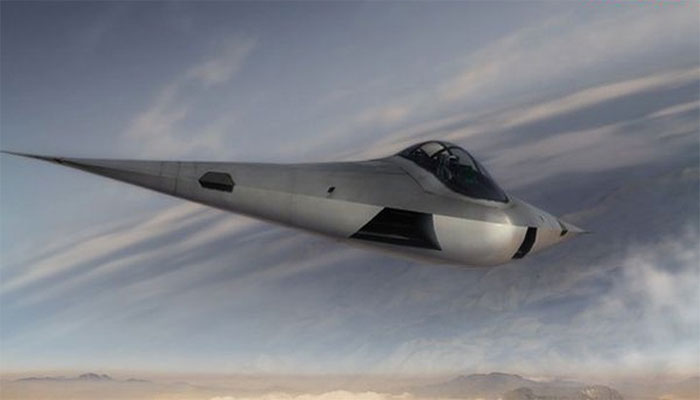
The biggest issue was that the Avenger entered the production phase just before the Cold War loomed.
Combining stealth capabilities with versatility in carrier operations, the A-12 promised unprecedented deep strike capabilities. In fact, the U.S. Air Force intended to replace the F-111 Aardvark bomber with the A-12.
However, many issues arose with the A-12. Initial expectations regarding its stealth capabilities were exaggerated, and adjustments significantly increased the weight of the Avenger. The production costs of this aircraft also escalated. However, the biggest problem was that the Avenger entered the production phase just before the Cold War began. Faced with tightening defense spending, Secretary of Defense Dick Cheney decided to “terminate” the A-12 to pursue other, less risky programs.
Future Combat System
In the early 21st century, the Revolution in Military Affairs (RMA) doctrine led to the creation of a major plan by the U.S. Army called the “Future Combat System.” In short, the application of RMA doctrine to modern operations demonstrated the integration of precision-guided munitions, high-speed communication, real-time connectivity, and surrounding sensor capabilities, changing how Army forces engage in combat. The Future Combat System envisioned an integrated system of weapons, vehicles, and sensors designed to demonstrate lethality and decisiveness in combat operations. The U.S. Army expected each element of this system to support the goal of linking sensors with users, enhancing lethality, and reducing the risk of leaving traces. This plan also aimed to utilize the Future Combat System to organize more agile and streamlined forces.
However, the Bush administration abandoned this plan during the Iraq War. The conflict in Iraq revealed many serious issues in deploying the Future Combat System program. As a result, this program gradually came to an end. The vision for a comprehensive system of systems “surrendered” to the need for specific capabilities in each different conflict. While individual components of the vision for a Future Combat System still exist, the overall system faced budgetary and combat reality obstacles.
Sea Control Ship
What would happen if the U.S. Navy replaced several large aircraft carriers with a large number of smaller carriers? During World War II, the Royal Navy and the U.S. Navy deployed a significant number of escort carriers, which were small carriers capable of supporting amphibious operations and anti-submarine warfare.
In the early 1970s, Admiral Elmo Zumwalt championed the concept of Sea Control Ships (SCS), a type of small aircraft carrier capable of protecting maritime routes against Soviet long-range aircraft and submarines.
In fact, the U.S. Navy had operated sea control ships, although they were also known as amphibious assault ships and assigned various missions.
The pursuit of Sea Control Ships clearly led to a shift in naval force structure as well as the design frameworks used for the navy. However, due to a shrinking military budget, the Pentagon abandoned this idea.
Conclusion
Clearly, technology plays a crucial role, but rarely do technological advancements alone provide a significant advantage in combat operations. Instead, technological progress and choices will shape how military forces are organized and the combinations of defense technologies. Each system is tied to the priorities and roles of the organization, while the elimination of any system can lead to significant capability gaps, necessitating new ways to address those requirements.










































